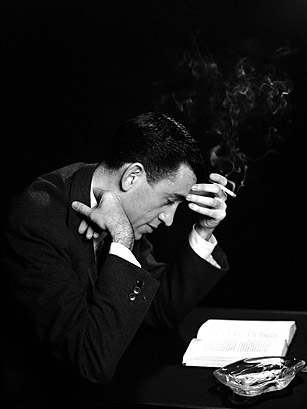
"Don't ever tell anybody anything." so says Holden Caulfield in The Catcher in the Rye, the 1951 novel that became holy writ for generations of disaffected adolescents. But those words could just as well have been spoken by the book's author. Cranky, eccentric and brilliant, J.D. Salinger turned his back on fame very soon after it arrived at gale force. Like Caulfield recoiling from the "phonies," he fled to the sanctuary of small-town New Hampshire and literally built a high wall around himself. Refusing nearly all interview requests, forbidding the use of his photo on the dust jackets of his books, he continued for a while at least to publish stories about the intricately burdened Glass family and its most captivating member, Seymour. But even that came to an end in 1965 after Salinger debuted one last story in the New Yorker and drew down the shades for good.
For now, his legacy consists of four haunting volumes — Catcher, Nine Stories, Franny and Zooey and a final book, combining Raise High the Roof Beam, Carpenters and Seymour: An Introduction — all of them filled with people suffering a kind of metaphysical heartbreak. It's said he went on writing. If that work ever comes to light, you can bet we'll go on reading.
—Richard Lacayo
Lacayo is TIME's art critic